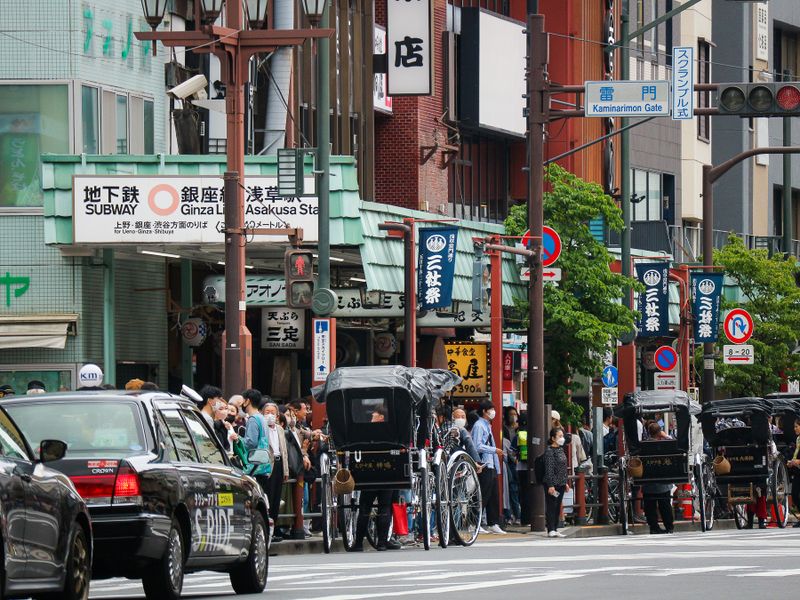Sep 4, 2023
Japan eyes task force to tackle overtourism

Expecting further recovery of tourist numbers following the COVID-19 pandemic, Japanese Prime Minister Fumio Kishida has expressed his government’s concerns regarding “overtourism” and revealed his intention to compile countermeasures by the fall.
Speaking during a visit to Naha, Okinawa in August, where he took part in a round table discussion on sustainable tourism, the prime minister said that his government, “recognizes concerns about so-called ‘overtourism’ as an important issue, including disorder caused by large concentrations of tourists and by poor manners,” in response to which he revealed his intention to compile measures to tackle these issues by the fall.
During the discussion the prime minister exchanged opinions with people working on the promotion of tourism in Okinawa who expressed their concerns that while the industry is in recovery following the pandemic the increase in visitors is sometimes having an adverse effect on the natural environment and that cooperation on the part of tourists is necessary to achieve sustainable tourism.
“The number of visitors to Japan and the number of tourists is of course important, but we must also improve not only the number but also the quality, profitability, and productivity of the tourism industry,” the prime minister said during the round table.
Prior to the outbreak of the COVD-19 pandemic Japan, in 2019, welcomed a record 31.88 million tourists and the government seemed comfortably on its way to reaching a target of 40 million foreign visitors in 2020, the year the Summer Olympic Games were due to be hosted by Tokyo.
Just how welcome such tourist numbers have been though, has been something of a divisive issue, particularly in places where overseas tourists have tended to congregate in large, often punctuated by news of local commuters in Kyoto unable to fit on buses already packed with tourists, explosions of visiting shoppers in Ginza clearing out the shelves, and graffiti found on ancient temples, among other stories presented to bring the public blood to boiling point.
During a visit to Fukushima Prefecture just prior to the pandemic the curator of a local museum almost seemed to lament being asked by City-Cost about the number of visitors to the facility.
"Should we go the way of popular culture and numbers of tourists or should we focus on real Japanese culture and tradition?" he told City-Cost. "I remember a time when there were around six million tourists coming to Japan, and now there are over 30 million. I wonder how we got here and if it’s being done in the best way,” he said with a cautionary note.
Ultimately, most of the government's hoped-for 40 million visitors to Japan didn’t show up during what was supposed to have been an Olympic year, mostly because they weren’t allowed in.
Virus-prevention measures, or the “hashtag Japan travel ban,” (perhaps depending on which side of the border you were based) saw visitor numbers drop to just 4.12 million in 2020. They plummeted even further in 2021. A serious blow to what was seen as a serious contributor to Japan’s economy, inbound tourism.
Perhaps it's due to having had one eye opened by the, albeit eerie, quiet of the pandemic and the other now nervously eyeing the behavior of the post-pandemic visitor bringing in a suitcase full of pent-up Japan-travel dreams and frustration, but the authorities here seem to be taking a new approach to inbound tourism, focusing on quality over quantity.
“With the recovery of domestic travel as well as inbound tourism, many tourist destinations are regaining their liveliness. We believe that this in itself is a wonderful thing,” Tourism Minister Tetsuo Saito told reporters during a press conference in August.
“On the other hand, we recognize that in some tourist destinations, concerns have arisen about the impact of excessive crowding and bad manners on the lives of local residents, and a decline in tourist satisfaction.”
Following up on the remarks made by the prime minister in Okinawa, Saito said that his ministry, including the Japan Tourism Agency, will take the lead in establishing a task force to tackle issues related to overtourism.
Any such task force, however, will likely have to work within the targets that the Japanese government has already set for inbound tourism which includes record numbers of visitors for 2025, the year that the city of Osaka is due to host the World Expo, and an around 25-percent increase in per person spending compared to 2019 levels.
And as the prime minister talked about sustainable tourism in Okinawa he also appeared to welcome the opening in February of a second cruise ship terminal at Naha Port capable of handling 220,000-ton cruise ships, the largest in the world, which he said would “increase the number of high-value-added inbound visitors.”
In June the new terminal welcomed the first of 21 cruise ships scheduled to call at the port by the end of the year - the MSC Bellissima (315.8 meters long, 171,598 tons), carrying 2,897 passengers.
Achieving quality over quantity looks set to be a tricky balancing act for the task force.
Related
Mt. Fuji “screaming” for new approach to overcrowding crisis, Yamanashi governor



0 Comments